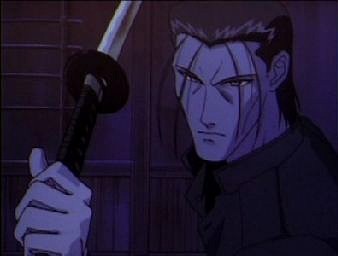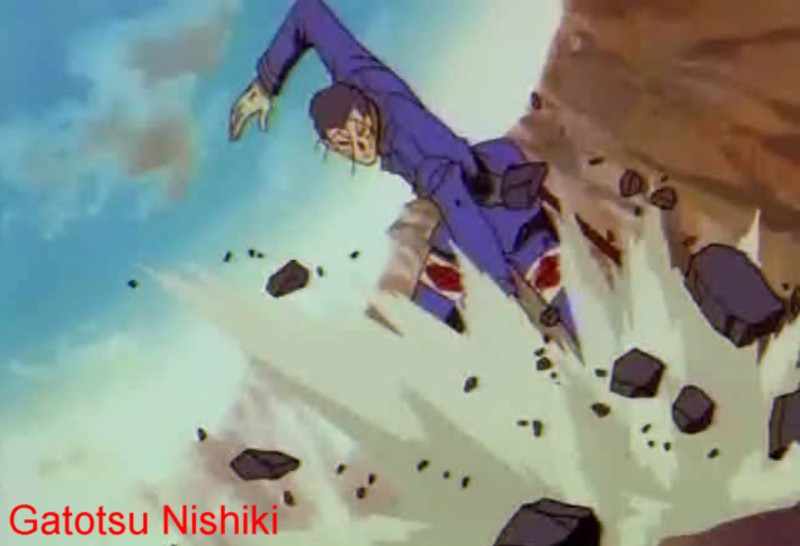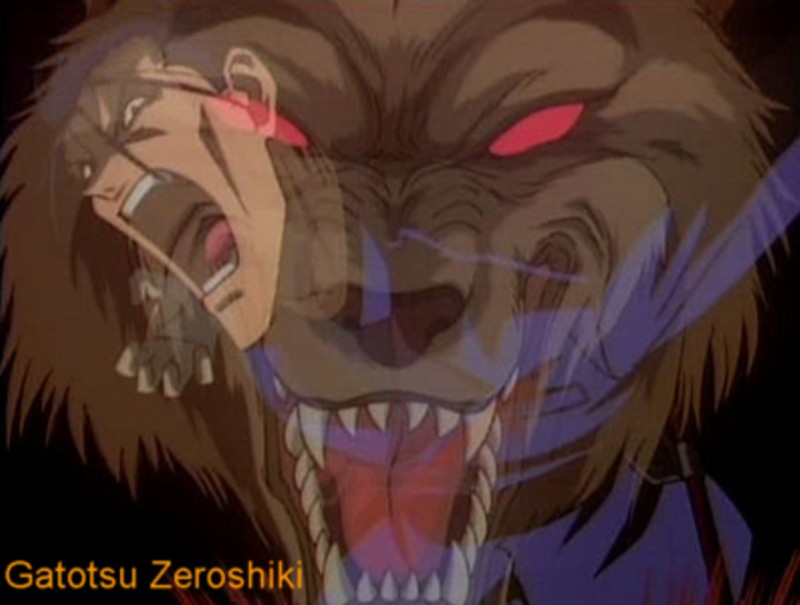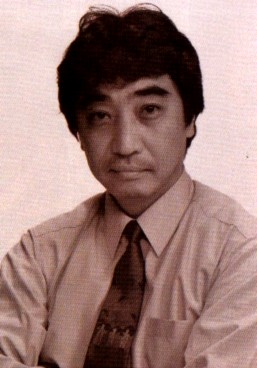Personal Stats

Name: Saitou Hajime / Fujita Goro
Nicknames: Ookami, Wolf of Mibu, Shinsengumi Sanbantai Kumichou
Born: January 1, 1844
Birthplace: Edo (old name for Tokyo)
Height: Around 6 feet
Weight: 71 kilograms
Zodiac Sign: Capricorn
Chinese Zodiac: Dragon
Bloodtype: Type O
Sword Style: Mugai Ryu
Sword: Unsigned – Japanese nippontou (Katana)
Character Design
According to Watsuki-sensei
“There was no model; Saitou Hajime was a real person. But unlike Sagara Souzou and Yamagata Aritomo, he has a deep influence on the story, so I adapted him quite a bit. I adapted him so much that I received protesting letters from fans of the Shinsengumi. (I’ve received protest letters before but now most of them are about Saitou.) But Saitou justs seems to get more and more popular, so I’m really happy. The character Saitou is still in progress, so I’ll keep quiet about the historical facts and the details about the plot, but I like the way he’s drawn as an aloof “dirty hero” who carries out his ideal of “Kill. Evil. Instantly,” never a simple good guy and always antagonistic to Kenshin and the others.
Other than the above I had no design. Since he was introduced in the beginning as a bad guy, I gave him a villain’s face, but I got protest letters about this too. It seems the fans of the Shinsengumi think of him as a gentle handsome man, even though there isn’t a single photograph left of him, so . . . (There is a portrait, though. It’s there, but those who want to think of Saitou as handsome probably shouldn’t look at it.) I also got letters saying, “What’s Saitou doing selling the Hijikata family’s Ishida Sanyaku?!” To put it simply, that was just a joke. And to those who protested that Akamatsu seemed like a practical joke, I am very repentant. But getting so many letters about such little things actually makes me very sad. I’m a manga artist and only human. Shinsengumi fans, can’t you read this manga a little more forgivingly . . .”
What’s important to note here is that Watsuki-sensei was a fan of the Shinsengumi and a lot of the characters were based on his own personal vision of them. Indeed quite a few of the stars in Rurouni Kenshin like Aoshi and Shishio were based off on the Shinsengumi which he was a big fan of. One book that got him hooked on the Shinsengumi was “Moeyo Ken” (Burn Sword), which was a historical fiction. In a way, he followed the footsteps of those people and incorporated his own personal vision on Saitou. He was not aiming for historical accuracy for Saitou and eventually Saitou took a life of his own apart from his historical counterpart. I would go so far as to say he was a unique creation inspired partly by history and all the fictional renditions that Watsuki-sensei immersed himself in. There are many authors who sacrifice historical accuracy for the sake of reaching more audience and helping them to relate to a particular work. Watsuki-sensei was no different in this regard, he had a story to tell and considering this was manga I believe he made the right choice. Just look at how popular Rurouni Kenshin got and after ten years here I am with a Saitou Shrine.

To the left is the character sketch for Saitou Hajime. These are given out to animators so that they have an idea of how to generally draw a character. Click the thumbnail for a bigger picture of Saitou’s Character Sketch.
Fighting Style the “Gatotsu”
Although the gatotsu isn’t real… It was one of the things that made RK Saitou very special ne? So let’s take a moment to review it’s different forms…

Gatotsu Ishiki – Saitou’s normal gatotsu (first form) that you see a lot in RK. It is a parallel thrust that targets the upper body of the enemy. He uses this attack all the time especially against Kenshin, where Kenshin even calls him on it. However perhaps he was lulling Kenshin into a false sense of security… *snicker*

Gatotsu Nishiki – Second form of the gatotsu that is an air attack. It is performed while on air to opponents on the ground. I’ve not seen him do this much except for when he fought Shishio Makoto. It looks pretty cool though.

Gatotsu Sanshiki – Third form of gatotsu that is an anti-air attack. It is a thrust from the ground to air on opponents who are up in the air. Again this was used against the final fight with Shishio where the spectators Hoji, Yumi and Sano dropped their jaws wondering who won the fight while suspended on air.

Gatotsu Zeroshiki – The ultimate form of gatotsu which is Saitou’s secret attack. It requires upper body strength as the legs are not much used aside from support. It is a point blank attack that usually surprises opponents as all the other gatotsu forms require some distance to provide strength and speed to the forward thrust. He was forced to use this against Usui where he won the fight but unfortunately failed in stopping Shishio. Well of coure he’s not the “hero” but I still love him nonetheless.
Seiyuu – The Voice Behind the Wolf of Mibu
 Born: 03/06/1950
Born: 03/06/1950
Hometown: Nagoya, Aichi Japan
Website: Ken Production – Hirotaka Suzuoki
Notes: Hirotaka-san has been in the voice industry since the 70s. He is a diverse Seiyuu not only doing anime but also dabbling in other genres as well like “La Femme Nikita”.
Previous Anime Projects:
Millenium Actress – trivia: Shinsengumi cameo…
Dragon Ball as Tenshin-han
Legend of the Galactic Heroes as Konev
Mobile Suit Gundam as Bright Noah
Naruto the Movie as Nadare Rouga
Pokemon as Sakaki
Ranma 1/2 as Tatewaki Kuno
Rurouni Kenshin / Samurai X as Saitou Hajime
Transformers as Starscream (OMG!)
Trigun as Chapel
Manga Appearance *warning spoilers*
Volume 7 through Volume 18 – Saitou’s appearance start the beginning of the Kyoto arc, where the wolf now known as Fujita Goro an undercover agent for the Police, confronts Kenshin Himura (Battousai) about the past to help the Meiji government deal with Battousai’s successor, Shishio Makoto.
Volume 19 through Volume 21 – The remembrance arc or “Tsuikohen” focuses on the Bakumatsu and the relationship that grew between Battousai and Tomoe Yukishiro. Saitou appears as a Shinsengumi in volumes 20-21, patrolling the streets and suppressing the supporters of Sonnoi-joi which was spearheaded by the Choshuu clan to which Kenshin was an assassin for. We also see briefly the other Shinsengumi members like Okita Souji, Kondou Isami and Hijikata Toshizo.
Volume 22 through Volume 28 – After a long disappearance from the manga Saitou returns in volume 23 to help the Kenshingumi retrieve Kaoru (Kenshin’s love interest) and fight off Enishi’s allies. This is known as the Jinchuu arc, and it is the final storyline in the Rurouni Kenshin manga. I absolutely love what Watsuki-sensei did with Saitou’s ending here. Upon receiving a letter from Himura, he refrains from seeing Himura in a duel that would finally settle their old score. He is able to shrug it off and walk away. Speaks a lot about Saitou I think.
Anime Appearance *warning spoilers*
Tsuikohen – This OVA also known as “Remembrance” follows what happened in Vol 19-21 of the manga. We see more of the Shinsengumi and Saitou for the first half of the OVA. It shows us Choshuu’s plan to burn the city of Kyoto and the Ikedaya raid. Towards the end of the OVA, the Boshin war is introduced and Kenshin and Saitou meet on opposite ends. This starts their feud that will carry on ten years later.
Episodes 28 through 62 (Season 2) – The anime follows the Kyoto arc of the manga closely with Saitou disappearing, thought of as dead by the Kenshingumi in Mt. Hiei. He however survives, as is shown in the last episode of the Kyoto arc. Unfortunately the Jinchuu arc was never animated (Sony who bought the license will probably not animate this considering it’s been ten years!) and we will never see the wolf again on the small tube. Why? Because Rurouni Kenshin continues on with it’s “Christian Arc” without Saitou. Note that the Christian Arc was full of filler episodes and did not at all follow the manga.
Rurouni Kenshin the Movie – The last animation of Saitou Hajime is found in the only RK movie that was not part of the manga. It is considered to be an original creation and was inspired by the original Rurouni Kenshin by Watsuki-sensei. Hard core RK fans typically do not consider this on par as the others as it was not Watsuki’s work per se. However what’s interesting in the movie is that it deals with the Aizu people who wanted to restore their position in society. It is important to note that the historical Saitou had close ties with the Aizu han and it’s people, but since this is RK we are talking about, RK Saitou is shown as dutifully doing his job regardless of the plight of former Aizu samurai.
Seishouhen – This was the last OVA made for Rurouni Kenshin that according to the animators was the final conclusion of the RK universe. We are treated to a five second shot of Saitou in a flashback. I’m not very happy with that, but most people aren’t that impressed with Seishouhen as it seems contrary to what is considered IC and reasonable in the fandom, for one thing Kenshin dies and it was like a hurried version of Jinchuu without much screen appearance by other characters. They did release a “Director’s Cut” version which included extra scenes. In this version Saitou gets a whopping 5 or so minutes, telling Kaoru that in their life-long feud, he won over Kenshin because he was alive. I was aghast. The ending in Jinchuu, Watsuki’s own creation showed the wolf did learn and grow, that he is able to pass his own shortcomings and prejudice against Kenshin Himura. ‘Nuff said.